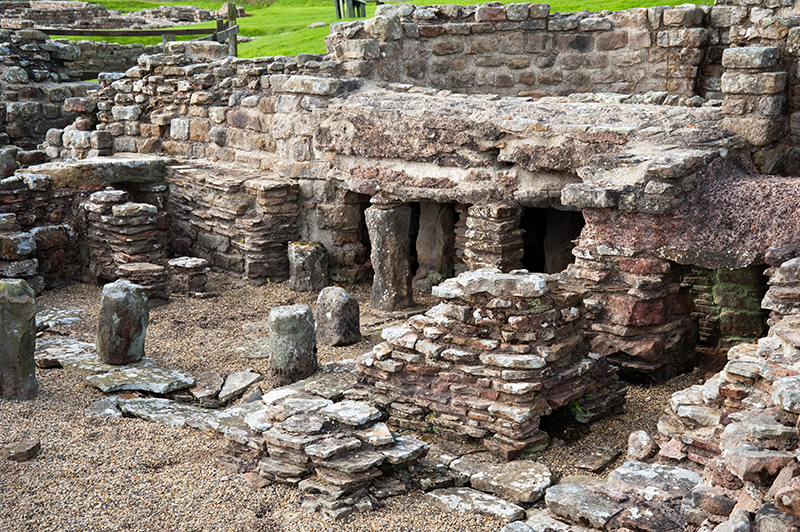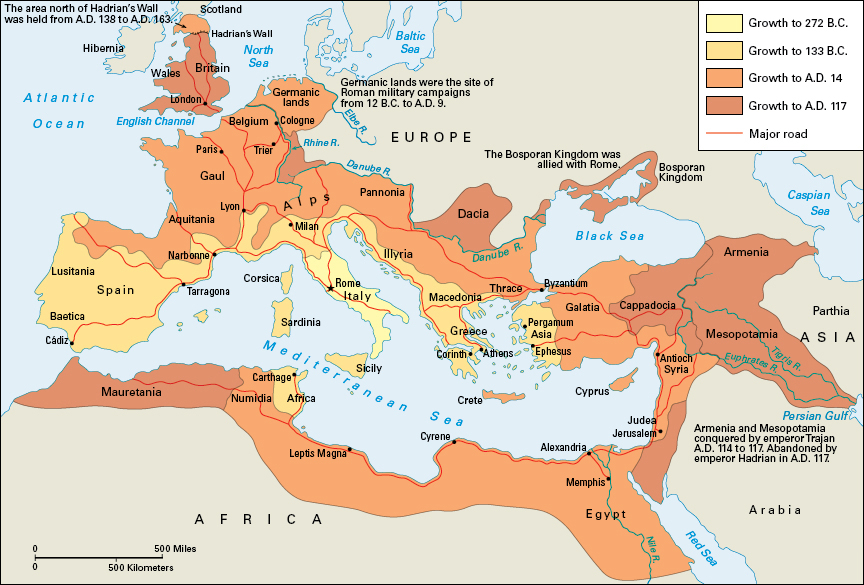Roman forts, called castra in the Latin language of ancient Rome , were temporary or permanent constructions that protected units of the Roman army. The army used temporary forts, also called “marching camps,” and semi-permanent seasonal forts while on military campaigns. It established permanent forts at the borders of the empire, and in troublesome provinces (conquered districts) to maintain law and order.

Roman camps and forts typically had a rectangular footprint. A turf or stone wall or a wooden palisade (fence made of stakes) enclosed the fort. A series of ditches and ramparts (defensive banks) protected the fort from enemy attack. The fort normally had four fortified gateways, one on each side.
Inside the fort, a main street called the via principalis connected two gates on opposite sides of the fort. Another main street, the via praetoria, formed a central T-shaped intersection with the via principalis. It extended from this intersection to a third, main or front gateway. A rear road called the via decumana extended from the fourth gate into the fort’s interior. A headquarters building, commander’s house, and hospital were built around the central intersection. The fort also had other streets, barracks, and buildings for storing grain. More permanent forts, such as those along Hadrian’s Wall in Roman Britain, sometimes had bath buildings in or near the fort complex.
Roman forts varied in size. Forts for a Roman legion typically covered about 50 acres (20 hectares) and housed about 5,000 men. Much smaller fortlets could cover less than 2.5 acres (1 hectare) and house only a few soldiers. Some forts housed a mixture of legionary and specialized auxiliary (support) troops, as well as some cavalry. In addition to a commander and his deputy—the senior military tribune —each fort had a praefectus castrorum (prefect of the camp). The praefectus was responsible for the upkeep of the fort’s buildings and equipment, management of supplies, and training soldiers. When necessary, he could take command of the troops in the absence of the senior officers.

Civilian settlements often developed around Roman forts. They provided goods, services, and entertainment for off-duty soldiers. Sometimes when the Roman army abandoned a fort, its structures were used to build a new civilian town. Many British and other European cities have characteristics indicating the earlier presence of a Roman fort. For example, the main streets in some cities and towns follow the routes of the main roads in Roman forts. Some Welsh and English place names begin with the prefix Caer- or end with the suffixes –caster, -chester, or –xeter, which come from castra. Examples of such towns include Caerleon in Wales , and Chester, Exeter , Leicester , and Winchester in England .
